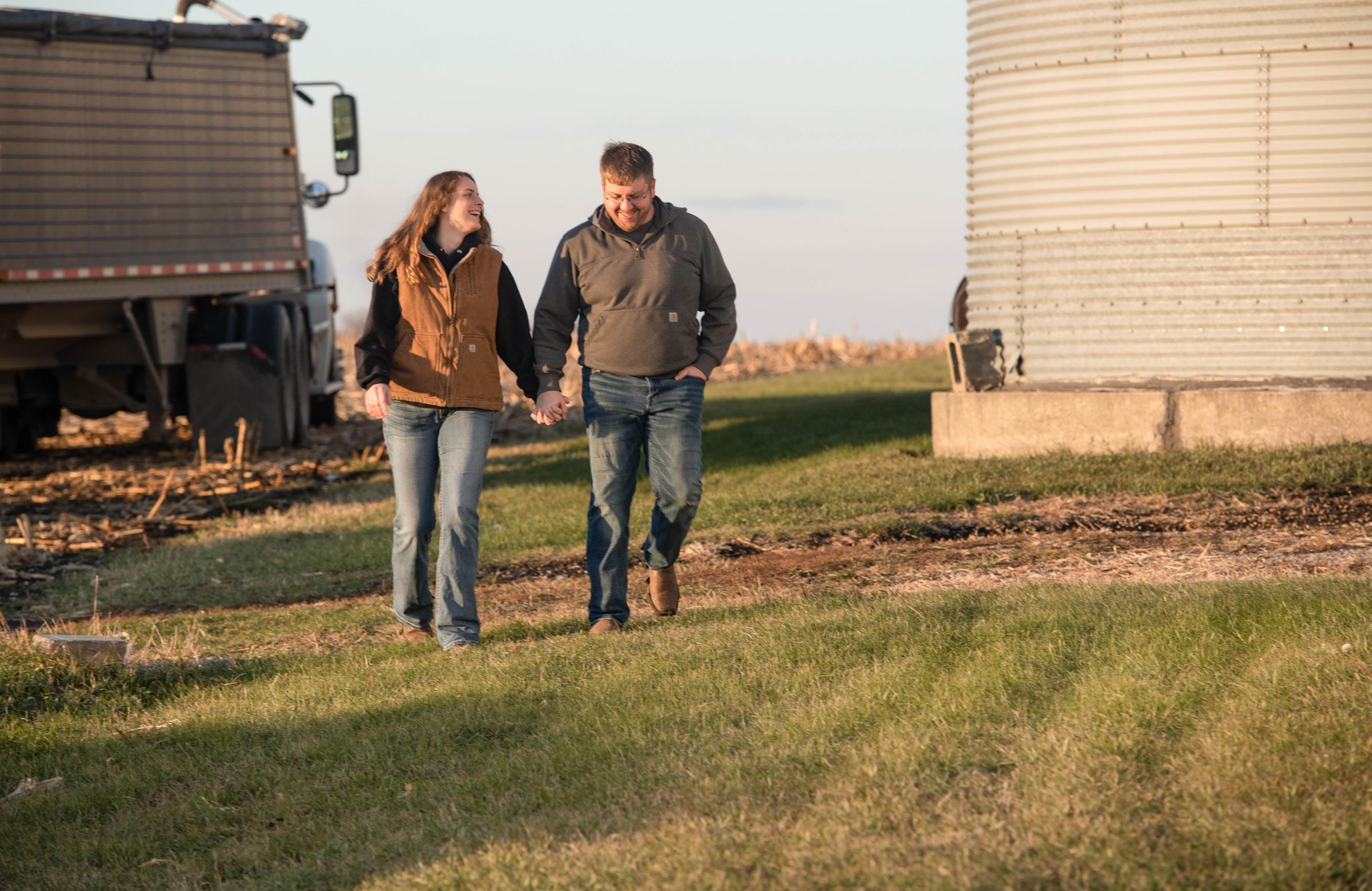
4 minute read
Cole the Cornstar
Cole the Cornstar's brother Cooper and his father Daddy Cornstar.
A Conversation with Cole:
Cast of Characters?
Cole the Cornstar, Daddy Cornstar, Cooper (Cole’s brother) and Sable (Cornstar Farms’ hired hand.)
Who is watching?
• 450,000 YouTube subscribers • 83% of viewers are male and 17% are female. • 75% of audience are aged 25-55 • Majority of views come from the
Midwest, but visits are logged worldwide. • Audience is half rural and half urban-dwelling.
Why the name Cole the Cornstar?
“I was brainstorming the name of the YouTube channel with friends. The idea happened at 11:30 one night, and I got up the next morning and got started on it. It was just meant to be.”
What makes your channel unique?
“One gift God gave me is to take complicated things and make them interesting,” says Cole. “I embrace that gift, formulate the content and make videos. Plus, I can be entertaining.”
Why the mass appeal?
“A lot of people who have never been on a farm are following us,” says Daddy Cornstar. “So that’s kinda neat for us. They are learning. We’re not anything special out here, but they have taken to us. It’s nice.”
Recent popular post?
“Our derecho video hit almost a million views,” says Cole. “There wasn’t a lot of reporting on the storm, other than local news sources. The rest of the country really didn’t know about it, so when they searched for more information about the storm in Iowa, our video popped up.”
Content philosophy?
“I want to show young people that by putting your mind to something, and actually doing it, you can achieve it,” says Cole, “It’s going to take time, but if you stay persistent enough, it will happen.”
Message for the urban sector?
“The 4x4 on the side of the pickup truck does not mean we only work four weeks in spring and four weeks in fall,” says Cooper.
Advice for wannabe agricultural advocates?
“I’d tell everybody to start a YouTube channel,” says Cole. “I think it’s the best way. Farmers can talk farm talk all day. YouTube allows them to get their farm talk fix by watching other farmers farm.”
Benefits of the soybean checkoff on your farm?
“Commodity organizations do so much for us behind the scenes,” says Daddy Cornstar. “They are out there promoting our products in ways we just can’t do.”
Legacy intentions?
“I watched my grandpa work hard every day of his life, sacrificing so much just so that he could throw everything he had back into the farm,” Cole says of his grandfather, who passed away in 2018. “I want to honor that legacy and do him proud. He’d be tickled by all this. He had a very distinct laugh, and if he was here, I think we’d get a lot of that out of him. He’d be amazed that all these people are watching from all around the world. *Editor’s note: Cole’s real last name and exact farming location is purposely not reported per his request for privacy.
Contact Ann Clinton at aclinton@iasoybeans.com.
Paige and James Hepp finish field work at their Rockwell City area farm. The Hepps are proponents of agriculture advocacy.

Finding Common Ground
Group expands opportunities to share ag stories
When the construction of a hog barn was announced in north Iowa, an acquaintance approached Val Plagge expressing their dismay, even though the barn wasn’t slated for Plagge’s farm near Latimer.
The acquaintance and Plagge shared some common ground – they were both mothers who took their children to the library for story time. That’s where they met. They had talked about a variety of topics previously, bonding over the trials and tribulations of motherhood. Plagge also became a credible source of farm and food-related topics for this mother, so it became natural that she would approach her with the concern.
Plagge, in a sense, had trained for this conversation. She’s been a CommonGround volunteer for years, sharing her personal experiences on the farm and the relevant science and research to help consumers sift through the myths and misinformation surrounding food production.
BY BETHANY BARATTA
“It’s not necessarily about what they come at you with to begin with as to why they’re upset. But if you ask questions and have an engaging conversation, you can figure out the root of their concern,” Plagge says.
The real root of the woman’s concern, Plagge learned, was that traffic related to the new hog barn would impede with the mother’s established running route.
With the tools in hand from CommonGround training, Plagge reassured the mother that the traffic wouldn’t be burdensome, and she would still be able to enjoy her scenic country run.
This was just one conversation of many that Plagge has had with consumers. She got her start in ag advocacy in earnest in 2012 after she and her husband Ian were selected to participate in the American Soybean Association/DuPont Young Leaders program.
“After the first session of that program, we were inspired to tell our story more,” Plagge says.
Since 2012, Plagge has shared glimpses of their farm life in their blog, “Corn, Beans, Pigs and Kids,” reflecting on all they raise and grow on their multigenerational farm in Franklin County.
She’s expanded her presence on Facebook, Twitter and Instagram, growing their audience and, through her volunteer work through CommonGround, connection with consumers.
CommonGround, funded through the United Soybean Board and the National Corn Growers Association, is a community of women in agriculture sharing their passions for the farm while also providing insight on how food is produced.
“It’s about having conversations with consumers,” Plagge says. “Females are typically the ones making household food decisions, so for those consumers to talk to another female that’s also making those decisions, producing the food or involved with food production, it’s a neat opportunity for consumers and CommonGround volunteers.”




